Special Reports
10 Questions, Two (Very Different) Festivals
The following article appears in Musical America's 2018 Guide to Summer Festivals.
The Ojai and Ravenna festivals boast similarly estimable lineage and prestige yet could hardly be more different—in locale, duration, budget, and atmosphere, not to mention musical focus. Yet they face many of the same challenges and often deal with them in similar ways, as we discovered in talking with Fabio Ricci, head of communications and press at Ravenna, and Thomas W. Morris, longtime artistic director at Ojai. An edited version of our conversations follows.
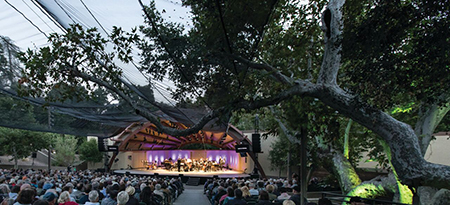
The Ojai Festival
Located in a valley northwest of Los Angeles, the Ojai Festival has a picturesque setting, more bucolic than urban. It concentrates its events into a single, chock-full weekend. Each year a different acclaimed musician serves as music director and formulates programming in partnership with the artistic director. Repertoire is predominantly but not exclusively contemporary; what is constant is a desire to challenge and provoke. 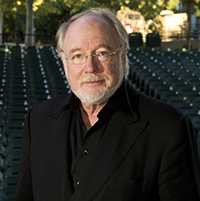 This year’s music director is the charismatic Moldovan violinist Patricia Kopatchinskaya, whose career so far has unfolded primarily in Europe. Known for the diversity of her repertoire and distinctly personal interpretations, she is a “brave and forceful performer” who “exudes energy,” according to Thomas W. Morris, Ojai’s artistic director. The festival will give the American premiere of her second staged program, Dies Irae, which features music from Gregorian Chant and Early Baroque to Giacinto Scelsi and Galina Ustvolskaya. (PHOTO ABOVE: The Libbey Bowl, the Ojai Festival’s primary venue. PHOTO RIGHT: Ojai Festival Artistic Director Thomas W. Morris.)
This year’s music director is the charismatic Moldovan violinist Patricia Kopatchinskaya, whose career so far has unfolded primarily in Europe. Known for the diversity of her repertoire and distinctly personal interpretations, she is a “brave and forceful performer” who “exudes energy,” according to Thomas W. Morris, Ojai’s artistic director. The festival will give the American premiere of her second staged program, Dies Irae, which features music from Gregorian Chant and Early Baroque to Giacinto Scelsi and Galina Ustvolskaya. (PHOTO ABOVE: The Libbey Bowl, the Ojai Festival’s primary venue. PHOTO RIGHT: Ojai Festival Artistic Director Thomas W. Morris.)
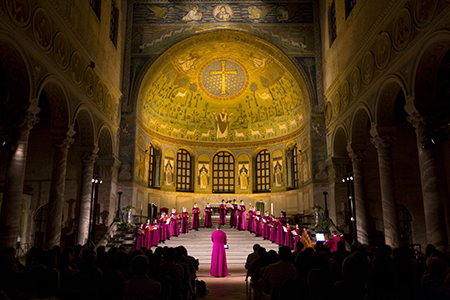
The Ravenna Festival
Riccardo Muti is staunchly loyal to his Neapolitan roots, but you can’t blame him for making his home in Ravenna, of which his wife, Cristina Mazzavillani Muti, is a native. The idyllic town near the Adriatic Sea in the Emilia-Romagna region of Northern Italy was once the western capital of the Roman Empire, and its surviving churches, cloisters, and piazzas house some of the world’s finest Byzantine mosaics. The city’s potential as a festival setting was recognized by Signora Muti, who has served as president of the festival from the beginning. Muti himself appears regularly, but as a guest without administrative responsibility. 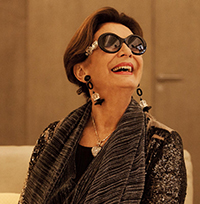 A tribute to Martin Luther King next summer includes a strong American component stretching from Bernstein to rock. A Muti-led Macbeth, new works by choreographers Bill T. Jones and Emio Greco, several visiting orchestras, and a salute to Ukrainian composer Valentyn Silvestrov are also planned. (PHOTO ABOVE: The Westminster Cathedral Boys Choir performs in the Basilica of Sant’Apollinare in Classe, one of Ravenna’s many historic venues. CREDIT: Jenny Carboni. PHOTO LEFT: Ravenna Founder and President Christina Mazzavillani Muti.)
A tribute to Martin Luther King next summer includes a strong American component stretching from Bernstein to rock. A Muti-led Macbeth, new works by choreographers Bill T. Jones and Emio Greco, several visiting orchestras, and a salute to Ukrainian composer Valentyn Silvestrov are also planned. (PHOTO ABOVE: The Westminster Cathedral Boys Choir performs in the Basilica of Sant’Apollinare in Classe, one of Ravenna’s many historic venues. CREDIT: Jenny Carboni. PHOTO LEFT: Ravenna Founder and President Christina Mazzavillani Muti.)
How far in advance do you begin planning the festival?
Ojai: The selection of the music director [which changes from year to year] is fundamental, since it outlines the shape and profile of the festival. That generally occurs about three to four years ahead; interactive planning with the artistic director then usually lasts about two years.
Ravenna: Around 18 months, but special projects, such as the Italian premiere next summer of Kiss Me Kate in a production by Opera North, may require up to three years.
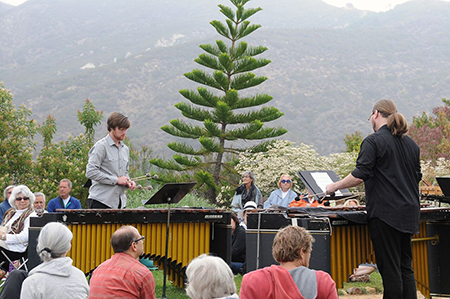 Please describe how the festival has evolved from its beginnings.
Please describe how the festival has evolved from its beginnings.
Ojai: The festival has always been held during one long weekend, but for the last decade we have begun it on Thursday. In 2006 we began to intensify audience immersion by offering events beyond concerts, such as pubic discussions by performers and festival staff, community gatherings, opportunities to get to know artists in smaller venues, and film screenings. So each day’s schedule has expanded to practically around the clock. In 2011 we formed a partnership with Cal Performances to present about 60 percent of our offerings in Berkeley following Ojai. [Ojai at Berkeley, June 14-16.] Next summer we’ll launch a similar partnership with Britain’s Aldeburgh Festival. (PHOTO: Contemporary music group “red fish blue fish” performing at the Ojai Festival, atop Meditation Mountain.)
Ravenna: Originally focused on classical music, it now includes theater, dance, jazz, and more. But the festival remains true to Cristina Muti’s aim to not just present international stars but to celebrate Ravenna’s heritage, which is one reason its ancient buildings serve as our venues. Since our concert in Sarajevo in 1997, the festival has included “The Roads of Friendship” initiative, which brings Riccardo Muti and orchestras composed of European musicians on annual visits to wide-ranging cities, many of which have been afflicted by war, political stress, or other hardship. Kiev, Ukraine, is this year’s destination. We also now have the Luigi Cherubini Youth Orchestra in residence and have added our annual “Autumn Trilogy” (which constitutes the festival’s second part), presented in Ravenna’s Teatro Alighieri. This year’s operas are Nabucco, Rigoletto, and Otello.
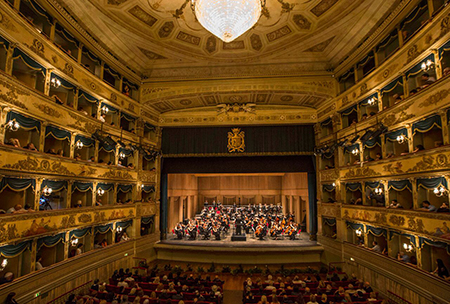
Do you have a training program for young artists?
Ojai: No, although we are active in training public-school students through our BRAVO program, which offers music lessons and other instruction as well as opportunities for students to perform alongside professionals.
Ravenna: The Cherubini Youth Orchestra, an ensemble of European musicians under age 30 selected by audition and headed by Riccardo Muti, in effect constitutes our young artists program. In addition, the Autumn Trilogy operas are cast significantly with singers on the threshold of careers. South Korean soprano Vittoria Meo, for example, debuted as Lady Macbeth in 2013 and since has had many international engagements, including Aida in Salzburg. The Italian Opera Academy, founded in 2015 by Riccardo Muti, embraces an intense series of master classes by Muti for young conductors and répétiteurs and culminates in performances; although the academy is autonomous, it relies on the festival team for its operations. (PHOTO: The Teatro Alighieri, Ravenna’s opera house.)
How do you handle housing? For artists? For audiences?
Ojai: Artists are accommodated in private homes, which strengthens the bond with the community, and also at hotels. For audiences, there are a number of attractive hotels in the Ojai Valley as well as nearby towns such as Ventura.
Ravenna: The festival provides accommodations for artists; as a major destination for cultural tourism, Ravenna benefits from a thriving network of hotels and resorts, both in the town and in nearby seaside locales.
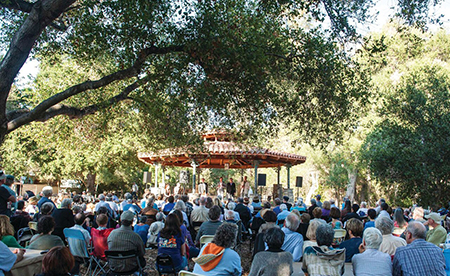 What percentage of your audience is local? What percentage is national? International?
What percentage of your audience is local? What percentage is national? International?
Ojai: About 20 percent comes from Ojai, from elsewhere in Ventura County, and from nearby Santa Barbara County. Visitors from the rest of California amount to 60 percent, with the remaining 20 percent coming from other parts of the U.S. and abroad.
Ravenna: The local audience (within 50 miles) amounts to 55 percent of the total, with national and international audiences accounting for 35 percent and 10 percent, respectively. The international audience has grown over the years, especially for the Autumn Trilogy, when it rises to around 25 percent. (PHOTO: A crowd gathers for a performance in the Gazebo in Ojai’s Libbey Park. CREDIT: Timothy Norris.)
Name two successful marketing campaigns
Ojai: To promote the world premiere of Jeremy Denk and Steven Stucky’s The Classical Style: An Opera (of Sorts), when Denk was music director in 2014, we dressed three actors in full costume as Beethoven, Mozart, and Haydn. We had them appear at the Ojai Farmer’s Market and downtown, a week before the festival. We took video and photos and used both on our social media channels and email campaigns leading up to the festival. They also made brief appearances in Libbey Park and at a donor event, which added to the spirit of spontaneity at the festival. [The Classical Style sold out.]
Ravenna: For the 2016 Autumn Trilogy of operettas performed by visiting Hungarian theaters, the festival created a Danube-like atmosphere in the city with free open-air concerts by Hungarian and Gypsy musicians, events featuring Hungarian food and wine, and a concert by the Budapest Gypsy Symphony Orchestra. Also, over time, we have increased our profile in the city by decorating buses and shop windows, and placing small flags at street corners to remind everyone that the festival is a real celebration.
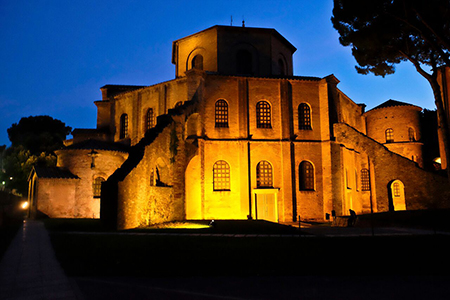 What efforts do you make to involve the local community?
What efforts do you make to involve the local community?
Ojai: We offer events targeted to the local audience—both ticketed and free—in a variety of venues and at times other than the festival weekend. On the last night of the 2016 festival, we put on a free street party and jam session in the nearby town of Santa Paula with all the artists participating. This year, the music director will host a free children’s concert during the festival.
Ravenna: The festival presents, co-produces, and commissions works calling for direct involvement of townspeople. Especially significant is last summer’s dramatic adaptation of Inferno, the first part of Divina Commedia, whose author, Dante Alighieri, lived his last years in Ravenna and is entombed here; literally hundreds of local people were involved in that. Purgatorio and Paradiso will follow in 2019 and 2021, the 700th anniversary of Dante’s death. Local artists also participate extensively in our “Young Artists for Dante” concerts and in the daily Vespers at San Vitale. (PHOTO: Ravenna’s Basilica of San Vitale.)
What are your most popular programs/events? Least popular?
Ojai: We have an audience that craves and expects adventure and that wants to be surprised. We hardly ever have a program with just one artist or work but instead tend to mix everything together—the festival is “through-composed.” Since programs don’t overlap, a person can go to everything. People don’t like it if we play it too safe. In a recent year we did Beethoven’s Choral Fantasy and people complained that it was too traditional, although it is, in fact, a strange and fascinating work.
Ravenna: In general, symphonic concerts, operas, and ballets draw the most people. Although they attract smaller audiences, the festival also provides niche-genre and/or intimate performances and often commissions new work. Cristina Muti regards it as a major accomplishment that the festival has conditioned its audience to welcome even the most innovative events with curiosity and enthusiasm.
What is the singular most anxiety-inducing aspect of your job?
Ojai: Since the festival lasts only four days, it’s a constant challenge to ensure, on a very small budget, that the festival maintains significant visibility throughout the year as well as producing cutting-edge projects. We schedule off-season events to build interest in what is coming.
Ravenna: With a festival as large as ours, many things can go wrong. But managing the logistics of The Roads of Friendship is particularly challenging. Detailed planning is required when any major musical ensemble travels, but the task is compounded when the destination city is not accustomed to such visits. Political realties can complicate matters still further, whether relatively routine, like obtaining visas, or of a more nuanced nature. But the human and cultural ties it promotes make The Roads of Friendship enormously rewarding.
Where do you see the festival five years from now?
Ojai: We will continue to build new and stronger networks and partnerships with other institutions having a similar cutting-edge aesthetic, such as Berkeley and Aldeburgh. Everything we do we do from scratch, so partnerships are an effective way to share costs through co-productions and co-commissions.
Ravenna: We envision the festival continuing in largely the same form as at present, but in 2021 we will host a special celebration of Dante on the occasion of his anniversary. No writer is more important to Italian literature. A celebration of Lord Byron, who lived in Ravenna during part of his seven-year Italian sojourn, is also in the works.
The Stats
Founding
Ojai:1947
Ravenna: 1990
Budget
Ojai: $2 million
Ravenna: €5 million ($6.2 million)
Locale
Ojai, CA: Rural city, pop. 7,600. Located in the lush, verdant valley of Ventura County, Northern California
Ravenna, Italy: Urban city, pop. 160,000. Located near the Adriatic Sea in the Emilia-Romagna region of Northern Italy. Ravenna was once the western capital of the Roman Empire
Performance site(s)
Ojai: Mostly outdoor—Libbey Park, Libbey Bowl
Ravenna: Historic churches, cloisters, and piazzas that house some of the world’s finest Byzantine mosaics
Genres
Ojai: Music, emphasis contemporary
Ravenna: Opera, symphonic, chamber, jazz, world, dance, theater
Audience size
Ojai: 8,000, mostly from California
Ravenna: 50,000 to 60,000, about half from within 50 miles
Staff size
Ojai: seven full-time, one part-time
Ravenna: 34 full-time, 12 seasonal
Dates
Ojai: Four days, June 7-10, 2018
Ravenna: 63 days: June 1-July 22; November 23-December 2, 2018
Management
Ojai: President Jamie Bennett; Artistic Director Thomas W. Morris; Music Director (appointed annually); violinist Patricia Kopatchinskaya for 2018; COO Gina Gutierrez
Ravenna: Founder and President Cristina Mazzavillani Muti; Artistic Directors Franco Masotti and Angelo Nicastro; General Manager Antonio De Rosa
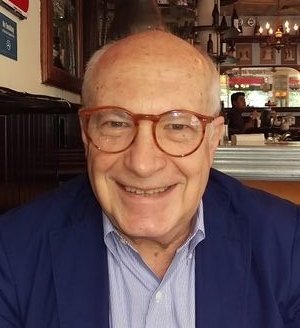
George Loomis is a regular contributor to Musical America and writes about classical music for The Financial Times, the New York Times, Opera magazine, and other publications. He has a doctorate in music history from Yale University.

WHO'S BLOGGING

Law and Disorder by GG Arts Law
Career Advice by Legendary Manager Edna Landau
An American in Paris by Frank Cadenhead





 FEATURED JOBS
FEATURED JOBS

 RENT A PHOTO
RENT A PHOTO


